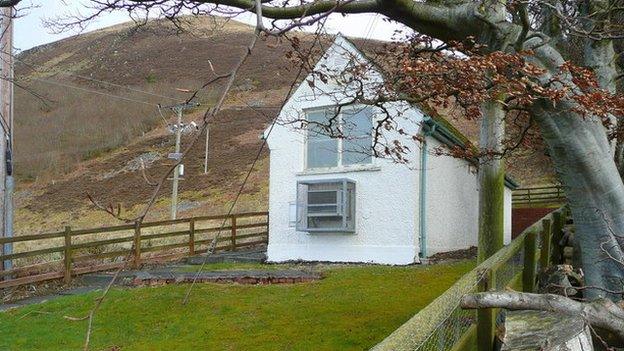'Challenging issues' face broadband in the Borders
- Published

A report has outlined the "challenging issues" facing the rollout of superfast broadband in the Borders.
By September 2017, 82.7% of premises were connected to fibre enabled cabinets or exchanges with a target of 94.9% by the end of this year.
However, a report said the distance from the exchanges - known as the "long lines" issue - was a concern.
This means that although a home or business have a connection it might notice no improvement in speed.
The report to Scottish Borders Council's executive committee outlines the progress made so far in delivering services and the issues encountered.
It said good digital connectivity was "crucially important" to the future economic development of the region.
More than 130 new superfast broadband cabinets and exchanges have been installed delivering new services to more than 31,800 premises.

The report said connecting remote rural areas presented a number of challenges
The council report said that while good progress had been made, the local authority would need to continue to press to ensure its "long-standing ambition" of everyone having access to superfast broadband could be met.
Among the issues being encountered is the distance from cabinets and exchanges in more rural areas.
The Scottish government announced last year it intended to spend £600m delivering superfast broadband to 100% of premises across the country by the end of 2021.
The report warned the challenge of delivering that should "not be underestimated".
It said a number of procurement exercises would be required, particularly in rural areas like the Borders.
'Less-peripheral premises'
A range of technologies would also need to be used to deliver the 100% coverage target.
One option which the report said could be considered was an "outside-in" approach to ensure the most remote premises and communities still without the service were connected first.
It said that would address the most challenging situations and ensure funding went to where it was most likely to be needed most.
In addition the report said that approach might help create solutions that could be used on "less-peripheral premises".
- Published15 August 2016

- Published9 June 2016

- Published8 June 2016

- Published7 June 2016
